I recently got a call from a woman, hysterical because I had “ruined the turkey” for her Thanksgiving dinner. She had discovered pink in where the thigh joint joins the back of the bird. I tried to explain that a properly cooked bird will be pink (but not translucent) on the inside of the thigh. (Wolfgang Puck is the only one I know who backs me up on this.) I asked her if she at least ate the breast (which I assume was perfectly cooked) and she said, no, that she had thrown the whole bird in the trash. So, I should probably explain in my books, when I tell people to take the bird out at 140 degrees, that the bird will still be pink.
While I think of roasting a chicken as the politically correct equivalent of a tv dinner–basically all you do is stick it in the oven–people are still intimidated by it. The fact is you can have more than satisfactory roast chicken by simply sliding it into a 500 degree oven and cooking it about 45 minutes. If you have convection, turn it on.
You may wonder why the high heat. It’s essential for browning. Browning is one of the central challenges in roasting, particularly with small roasts, because the heat has to be high enough to brown before the roast cooks through. Thus it’s impossible to brown a quail in a home oven (restaurant ovens are something else) without cooking it to death. On the other hand, roasting a turkey presents no problem because it spends so long in the oven in order to cook through. The solution is to brown such small roasts on the stove before sliding them in the oven.
While you can roast a chicken by just sliding it into the oven and forgetting about it, there are a few tricks that improve it significantly. One of the most persistent problems facing the roaster of birds is the tendency of the breasts to cook through before the thighs. This is why the breast meat of so many turkeys is dry–although relying on the pop-up thermometer is equally catastrophic. To avoid this, cover the breast loosely with buttered aluminum foil for the first 20 minutes of roasting. This slows down the cooking of the breasts and gives the thighs more time to catch up. The bird is done when a thermometer stuck between the thigh and the breast (near the joint but not touching) reads 140 degrees. If you don’t have a thermometer, determine doneness by looking at the juices in the bird’s cavity. Most recipes say to wait until they are clear (initially they are a cloudy pink) but I’ve found that this overcooks the bird. A more reliable system is to wait until the juices are clear but streaked with red. Cover the bird loosely with aluminum foil for about 15 minute to let the heat redistribute and leave the chicken more evenly cooked.
The relatively low temperature that I call for often provokes questions about safety. While a somewhat higher temperature is required to kill salmonella, keep in mind that salmonella is only on the surface of the bird and not in the muscle tissue (the meat) unless the bird died of a septicemia. The surface of the bird gets much hotter than 140 degrees.
It is in part for this reason that it’s not a good idea to stuff turkeys and chickens. To cook the stuffing and get it to a safe temperature (around 160 degrees) you have to cook the bird to death. A better idea is to wrap some stuffing in aluminum foil and put it in the roasting pan next to the bird.
I’m often asked about roasting racks. I never use one because they suspend the bird above the roasting pan. This causes the juices to drip down on the pan which is much hotter than the bird and burn. To prevent this, put the bird right in the roasting pan. Select a roasting pan that’s close in size to the chicken so there aren’t bare patches that get too hot and cause the juices to burn. To keep the chicken from sticking to the pan, set it on a few slices of onion or carrot (these will contribute flavor to the juices, see below) or the giblets taken out of their little paper package.
Last, there is the question of jus and gravy. A gravy is simply a jus that’s been thickened and in the case of roast chicken I rarely bother with the thickening unless it’s just to add a little heavy cream and reduce it a tad.
When your chicken is finished roasting, the roasting pan will contain both juices (some or all which might be caramelized into a brown crust clinging to the pan) and liquid fat. The trick is to separate the two. If the fat is perfectly clear, it means that all the juices have caramelized and that all you need to do is pour off the fat before deglazing. If the juices are cloudy, it means that they have emulsified with the fat. The trick is to separate these emulsified juices from the fat. To achieve this, boil down the juices by putting the roasting pan on the stove. Re-position the pan every 30 seconds or so so that the juices brown evenly. When the liquid in the pan turns clear, and a brown crust has formed in the pan, pour off the liquid fat.
Now you should have a roasting pan with a caramelized crust and no fat. Deglaze the pan with a small amount of water or broth (never more than a cup for a single roast chicken) and put the pan on the stove. Boil the liquid while scraping with a wooden spoon to get the crust to dissolve in the liquid.
Another trick, and one that’s particularly useful if you don’t have enough drippings, is to make a kind of phony jus by caramelizing broth. Pour a cup of broth into the roasting pan and boil it down until it reduces completely and caramelizes on the bottom of the pan. Deglaze with another cup of broth, scrape up the crust, and caramelize again. Deglaze. Caramelize. Ad infinitum.
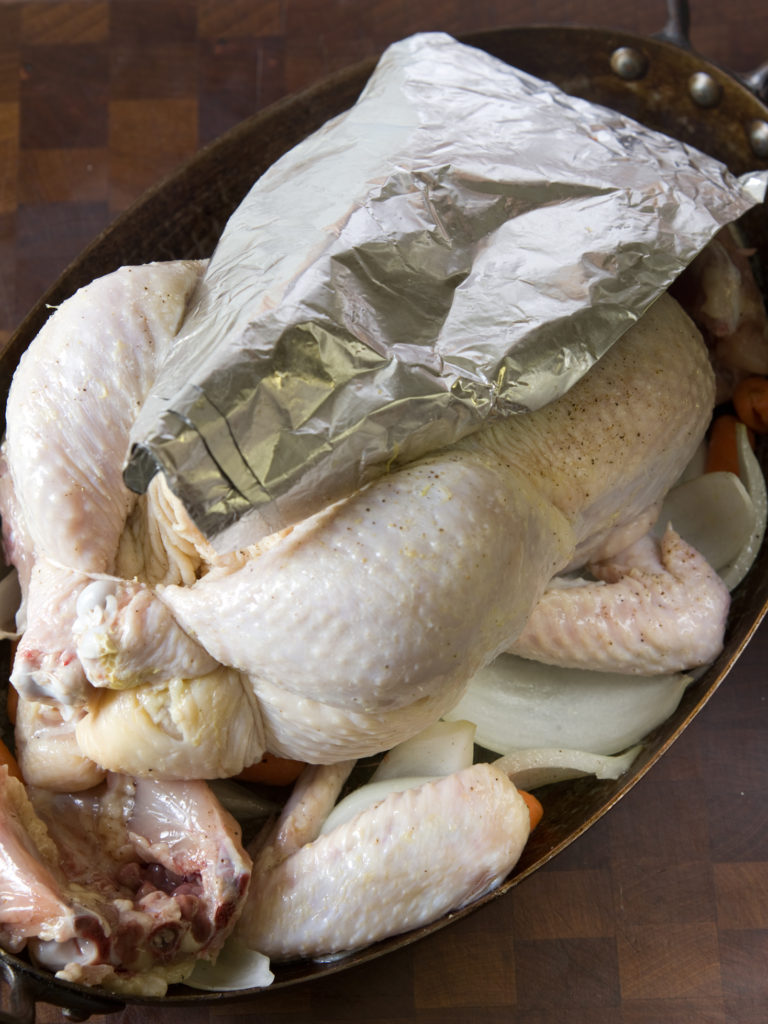
1 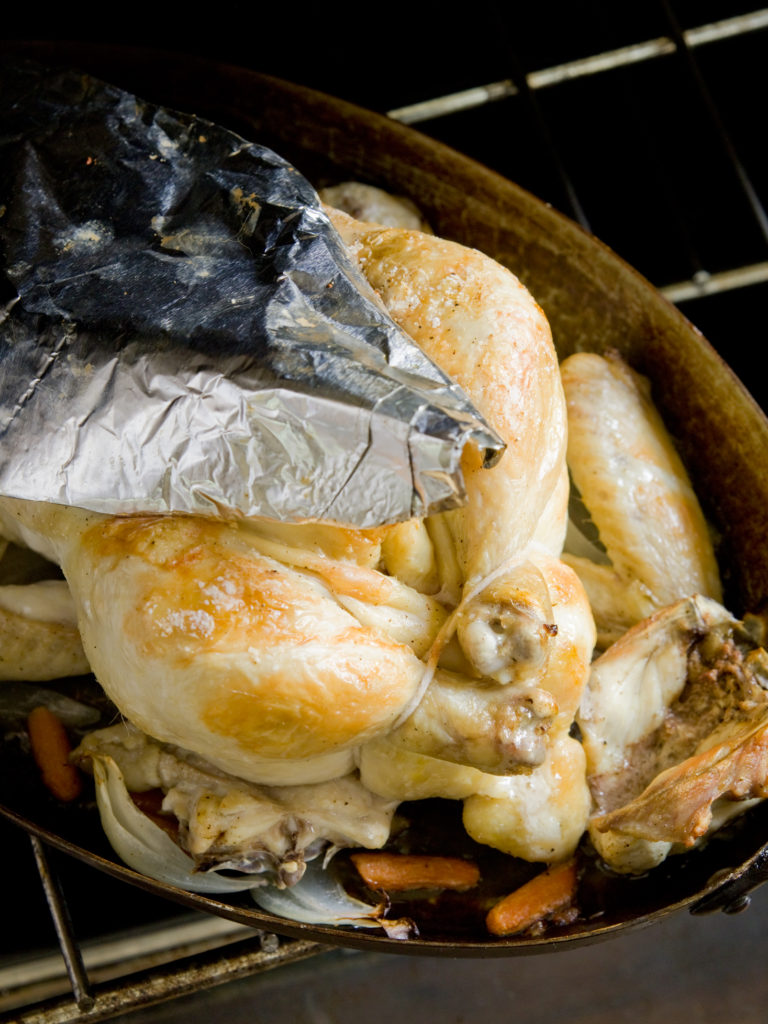
2 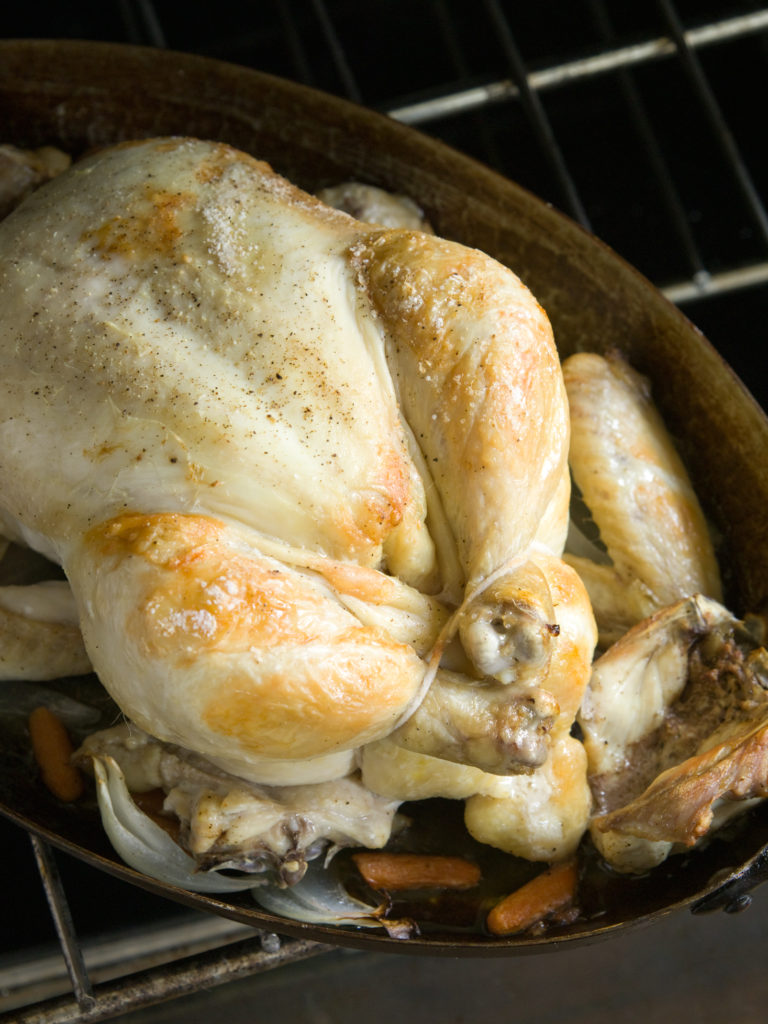
3 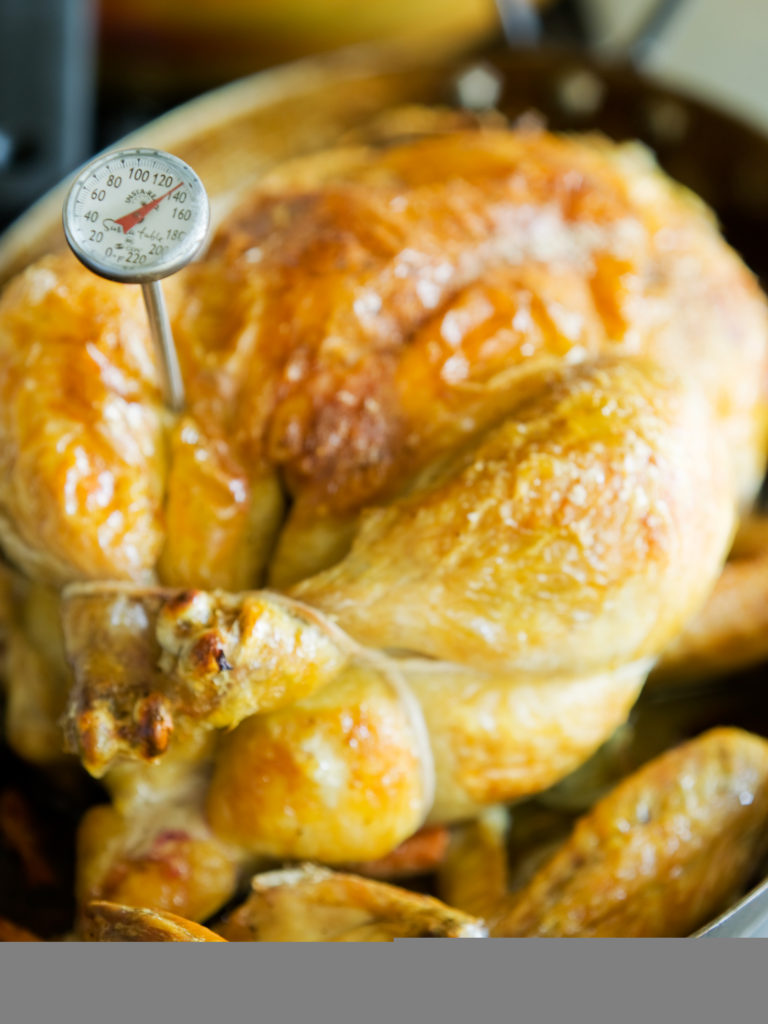
4
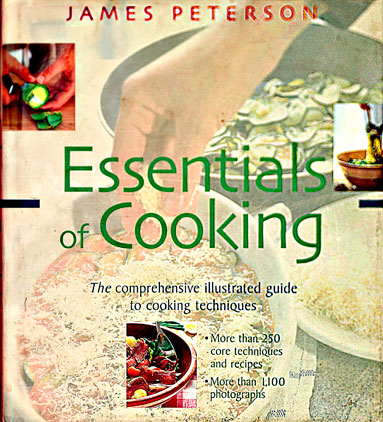
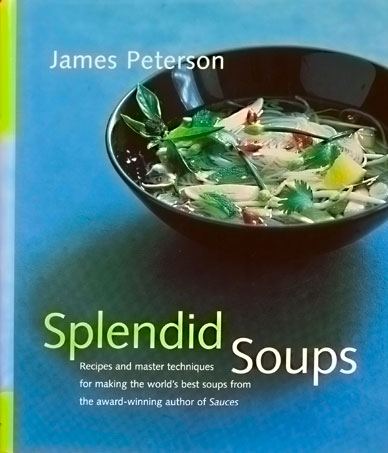
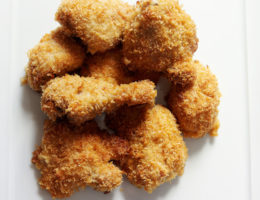
Jim,
You clearly have thoroughly thought these cooking procedures totally through. I came to your website as I bought your Sauces book, which I plan to read as I recover from surgery.
Steve
I hope you enjoy it. Good luck in your recovery.
Thank you for this information! My dry turkey breast problem is now solved, and the general information on birds is so enlightening. OF COURSE! WHY HAVEN’T I realized all of this. My mother, who was a fabulous cook, taught me the love of experimenting in the kitchen and we both were (and I still am) avid cookbook readers…the best time being in bed, when the house is quiet.
I have always LOVED your cookbooks, but have never bought SAUCES, which, after having been able to take a peek inside, I will now add to my collection.
At 77 yrs. I am still working – in a restaurant, of course – and we are so proud to have a Cordon Bleu chef who makes fabulous sauces and SHARES all his recipes with anyone who asks. It is because of wonderful chefs like you that I have become a good chef myself and cooking remains a passion.
Thank you again.
Hi,
You’re an inspiration. I’m 61 and people ask me if I’m retired. Fat chance. I love my work and don’t want to stop although it would be nice to have the option. Best of luck. Jim
Hi Susan,
Thank you for you kind post. I just figured out how to check my comments, hence the long delay.
best,
jim peterson